Onychomycosis is a fungal nail disease caused by dermatophytes and fungi of the genus Candida.The infection occurs at home contact by people and infected animals.At first, nail fungus develops slowly and significantly, but after a while the symptoms of the disease are growing rapidly.
Ways of infection
Fungal lesion can occur under the following conditions:
- injuries, cuttings, scratches, irritation of the skin on the toes;
- Frequent or prolonged contact of the feet with water: when tissue density decreases, mycosis spores penetrate freely into the deep layers of nails;
- Excessive sweating: tight shoes, synthetic socks create a warm and humid, optimal environment for the development of fungus on the foot;
- taking the course of antibacterial drugs;
- Varicosis, venous insufficiency, diabetes mellitus and other systemic diseases that adversely affect capillary blood circulation and lymph flow.
Once the fungal infection penetrates the upper and deep layers of the nail, the mycelium begins to grow, destroying the nail plate.At this stage, using the diagnosis, you need to determine the presence of a fungus infection and choose the optimal method of treatment.
Symptoms
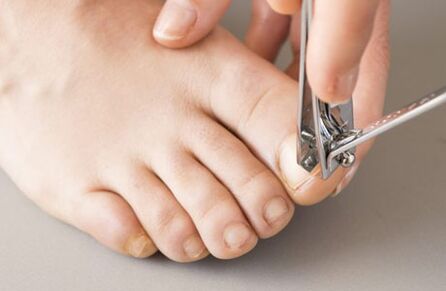
Symptoms of the disease can be divided into two categories: changing the color and structure of the nail plate.
The color of the affected nail may vary depending on the pathogen:
- Yellow straps that occur on the edge of the nail indicate the epidermophitosis;
- With trichtophytics, the nail shade becomes gray-grymal;
- White spots and white straps indicate the rubofitosis;
- In the case of favus infection, the shade of the entire surface becomes yellow, while at first the disease remains a smooth and shiny surface of the nail plate.
In the case of the growth of mycosis, the nail structure changes: the nail loses rigidity and becomes loose, fragile, easily delays.When infected with the epidermofite, the nail thickness grows and in the form of a bird's claw.
Nail mushrooms can be associated with an unpleasant odor, allergic toes, irritation, redness of the fingers.In the case of the advanced stage of the disease, there is a risk of breaking and loss of nail.
How to handle nail fungus at home
For successful foot and nail treatment, an integrated approach is important:
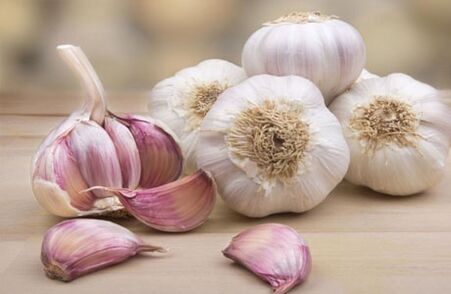
- the use of antifungal drug agents in the form of a cream, oil, varnish;
- the use of traditional medicine recipes;
- Preventive measures after recovery.
Along with medicines, home treatment recipes are quite effective in the fight against onycomycosis.Standard treatment of home nail fungus involves the use of compresses and bathrooms with natural fungist agents.
- Compress from garlic.Some garlic cloves are crushed into baked potatoes, which are placed on the affected nails in the legs.Garlic should be held for 40 minutes every evening.
- oil.Lubricate the affected areas with spruce oil several times a day.The duration of treatment is 2-4 months.
- Timyan.For infusion, you will need to pour 100 grams of dry thyme grass with 2 liters of boiling water.When the solution becomes moderately hot, it is necessary to strain the liquid and evaporate the legs for 15-20 minutes.The procedure is performed daily until healing.
- Baths with salt and potassium permanganate.In hot water (3 liters) add 3 tbsp.l.Salt and some crystals of potassium permanganate so that the solution can gain a pink color.The legs are evaporated for 20 minutes, after which you should apply an antimycotic cream.
- Rowan leaves.100 grams of green mountain ash leaves should be chopped and added 1 tablespoon of salt.The rowan leaves' compress is covered with polyethylene and held all night.
iodine
An alcoholic iodine solution is an excellent antiseptic that is successfully used in antifungal therapy with home methods.
To get rid of the fungus, use a 5%iodine solution.To do this, you need to drip iodine solution on the affected nail plates twice a day.A favorable result of treatment will be visible within a week.Continue with iodine treatment from 5 to 8 weeks.
Necessary baths with iodine.In hot water on average, add 5 drops of iodine 5%and evaporate your feet for 10-15 minutes.The disinfectant effect of iodine solution acts best on a fungus infection if the nails and the skin on the fingers are steaming.
After the procedure, you need to wipe your feet with paper towels and treat hydrogen peroxide.After that, antifungal cream should be applied.
Ammonia
Ammonia solution is successfully used to treat nail fungus, as it has not only antifungal but also antibacterial properties.
The ammonia compression consists of 200 ml of cooled boiled water and 1 tbsp.l.Ammonia for the procedure, cotton pads are used, which must be wet in the solution and placed on the affected nails.The compresses have remained all night.To adjust the cotton pads on your fingers, you can wear attacks.
Therapeutic bath: in hot water on average, you should add 2-3 tablespoons of ammonia, 1 tablespoon of liquid soap and 1 tablespoon soda.It is necessary to evaporate the legs in the solution for 10-15 minutes.Then the nails are cut, and the top layer with a file is cut on top.After that, you need to rinse your feet in clean water, wipe dry and use an antifungal or spray oil at night.
Nail mushrooms with this method should be treated every evening for 10-12 days.Once the improvements are made, the baths should be used in another 2-3 weeks.
Hydrogen peroxide
Hydrogen peroxide is an excellent antiseptic and has proven itself to treat different types of dermatophytes.Use a 3%solution of hydrogen peroxide, as a high concentration can adversely affect the nails and skin of the feet.
To prepare compression, you will need a hot water bath with soap, a 3%solution of hydrogen peroxide, cotton pads, polyethylene.The legs should evaporate in hot water for 10-15 minutes, and then attach cotton pads impregnated with hydrogen peroxide to damaged nails.At the top you can cover compression with polyethylene and insulate.
The compression is set for 40-50 minutes, after which the antifungal cream is applied to the surface of the nails in the foot.The course of treatment is 15-20 days.
Vinegar and eggs
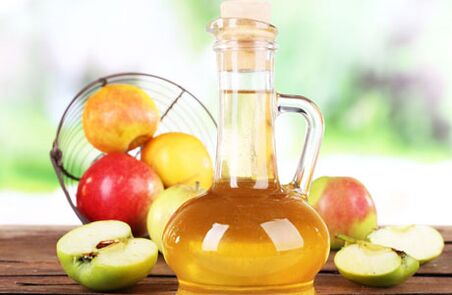
Vinegar and acetic acid are often used to combat home fungal infections, as the acidic environment inhibits the development of all types of mycosis.Recipes use 3% vinegar and 9% concentration, essence vinegar, apple cider vinegar.In this case, the product is mixed with other ingredients to soothe the effect of the acidic environment on the skin.
- Treatment with vinegar and eggs.It is necessary to get 3 raw proteins and 2 tbsp.l.vinegar and alcohol.The product is fully induced until a homogeneous condition is applied to the affected nails in gauze or cotton pads.After 20 minutes, used cotton pads are laid away, and the compresses should be repeated again with new discs.Then you need to wash your feet in clean water and apply antifungal spray.During the procedure, you can feel a slight burning sensation, rash is possible - this is how the effect of vinegar is manifested.If the burning sensation is too strong, the concentration of vinegar in the recipe should be reduced.To cure fungi at home with vinegar, daily procedure will take 2-3 months.
- Iodine and apple cider vinegar.These ingredients are mixed in equal proportions and the product is applied cotton.For each nail, use a new stick.Since the recipe includes iodine, the nail plate will be brown.The medical mixture can also be applied to the skin affected by the fungus.The solution is used 2-3 times daily for 10 days with a week rest.At the end of the treatment course, the procedure is repeated several times a week for one month for preventive purposes.
Popular methods of treatment
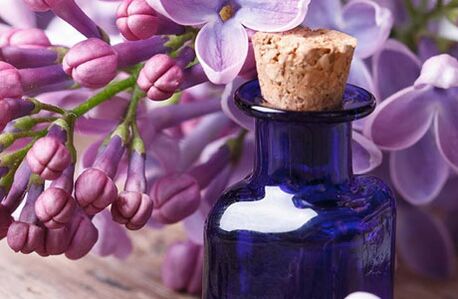
External treatment of home fungi is performed using decoction of healing plants and tinctures.The only condition when it is necessary to stop the treatment of nail fungus with the agents shown is the appearance of allergic reactions.
- Tincture by lilac.Lilac has a strong antibacterial effect.The tincture will require 10 grams of dry lilac and 100 ml of alcohol.The product should be insisted on a dark place.Save the solution on a dark glass vessel.To eliminate nail fungus, grease areas affected with lilac solutions 2-4 times daily until a full cure.
- Water.Chezieric is a toxic bar that is used only externally to destroy dermatophytes, loss, lice.Cheerer's alcohol solution is sold at a pharmacy.The product is applied to the affected nails and the skin in the legs several times a day.Cheerersa can also be used as a preventive agent after the destruction of onychomycosis.
- Antifungal collection.For a decoction, it will require ritual grass, fence fruits and foil root.It is necessary to take 1 tablespoon of each plant and pour a glass of boiling water.Once the liquid is inflated and cooled, it can be used as a compression 2-3 times a day.
- decoction.Dill grass has a strong disinfectant effect.For cooking, you will need to boil 2 tablespoons of dry dill in two liters of water using a water bath for 15-20 minutes.During this time, part of the water is evaporated, so you need to add boiling water to the decoction to bring the amount of liquid to 2 liters.A fennel decoction is used for daily foot baths for onycomycosis and detention dermatomycosis.This method of home treatment is used daily for one month.
- Fake.Cerandin grass is highly poisonous and has bactericidal and antifungal properties.To prepare the infusion, you will need 3 tbsp.l.Celandine and half a liter of boiling water.The resulting fluid after cooling must be filtered.Cerandin infusion is used for wiping and compresses in areas with a fungus 2-3 times a day.
- pepper.A decoction of peppers relieves inflammation and itching, and is used for foot baths for onycomycosis.It is necessary to prepare the right amount of cooking based on the proportion: 2 tbsp.l.Dry peppermint grass and 1 cup boiling water.Cooking time is 15 minutes in a water bath.
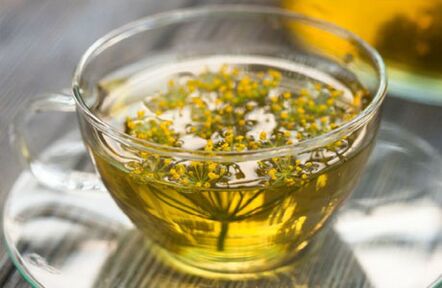
What may the consequences be
If you do not treat the disease, then the advanced shape of the nail fungus can cause serious consequences, which can significantly exacerbate the overall condition of the body and nails in the legs.The main consequences of onychomycosis include the following conditions:
- Perenog hyperkeratosis is a complication of onycomycosis, in which the nail plate is significantly thickened.
- Nail's onicholysis - nail detachment from the nail bed, when a gap is formed under a solid layer.
- Destruction of the nail plate.In this case, it may be necessary to remove the surgical nail.
- Epidermophids are allergic consequences of nail fungus, which periodically manifest rashes throughout the body.
- There is a possibility of spreading infection throughout the body.Mycosis can hit important areas of the skin of the feet, arms, faces, as well as hair glands and, in rare cases, nerve and lymph systems.
PREVENTION
The prevention of onychomycosis is aimed at maintaining the body's protective functions at a high level, this requires the following measures:
- Take complexes of vitamin and minerals;
- consume enough vegetables;
- Minimize the use of foods with a high sugar content, as high blood glucose levels help to multiply mycosis;
- eliminate intestinal dysbiosis;
- Avoid stressful situations.
You should also monitor the integrity of the skin and toe hygiene.This follows:
- Treat wounds and timely fraud;
- Get rid of the foot hyperhidrosis;
- Do not use other people's shoes and hygiene products.
You can use medicines that are used once a week to prevent fungus.For this purpose, antimicotic varnish is used, on top of which you are allowed to apply color spray.















